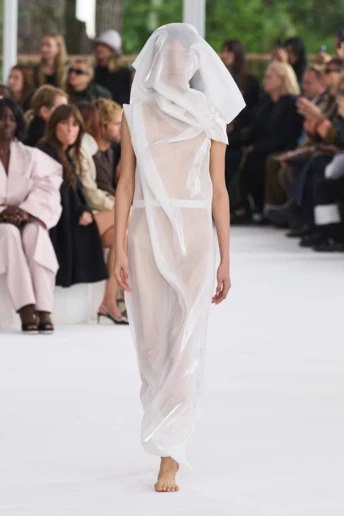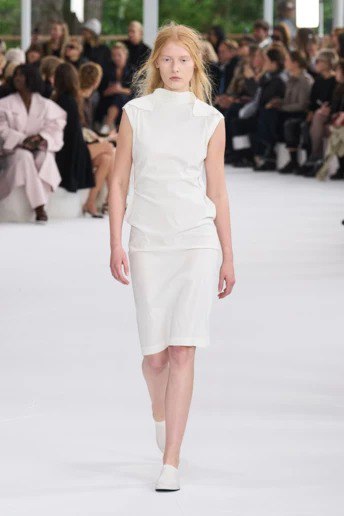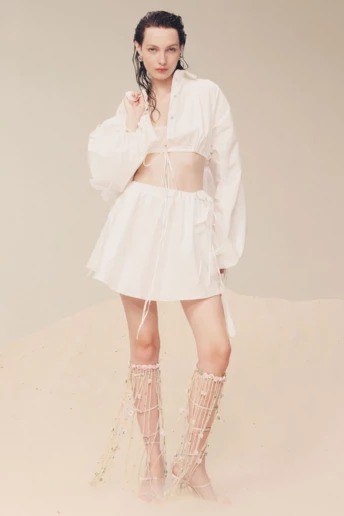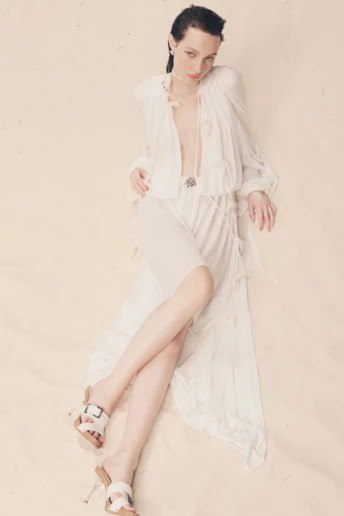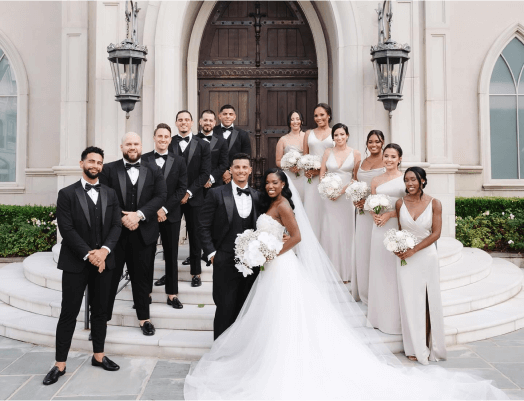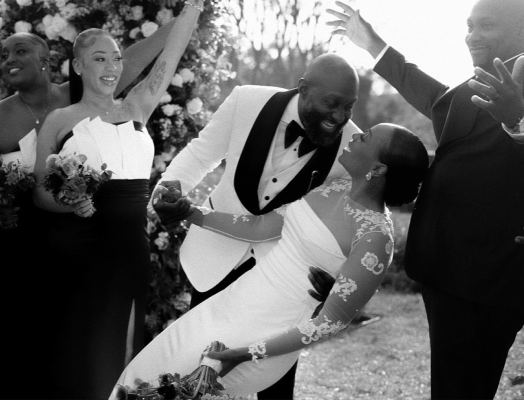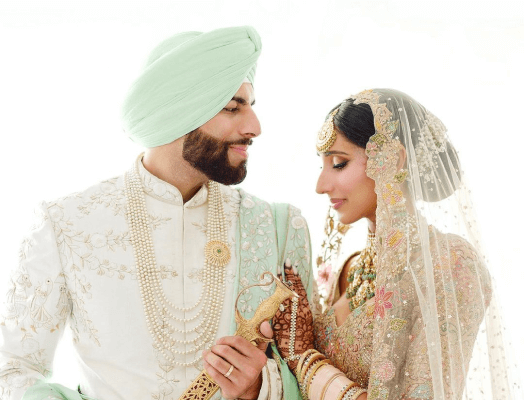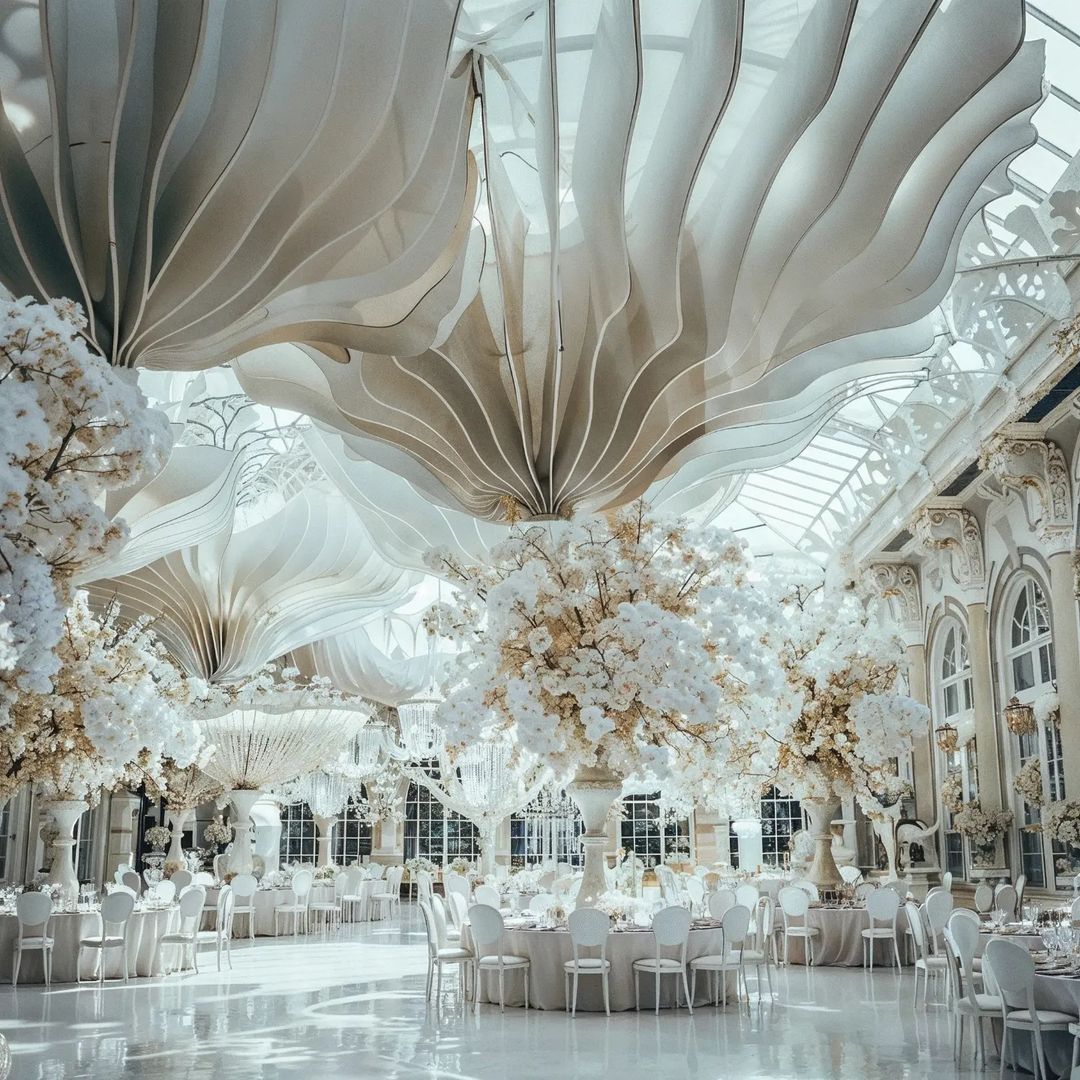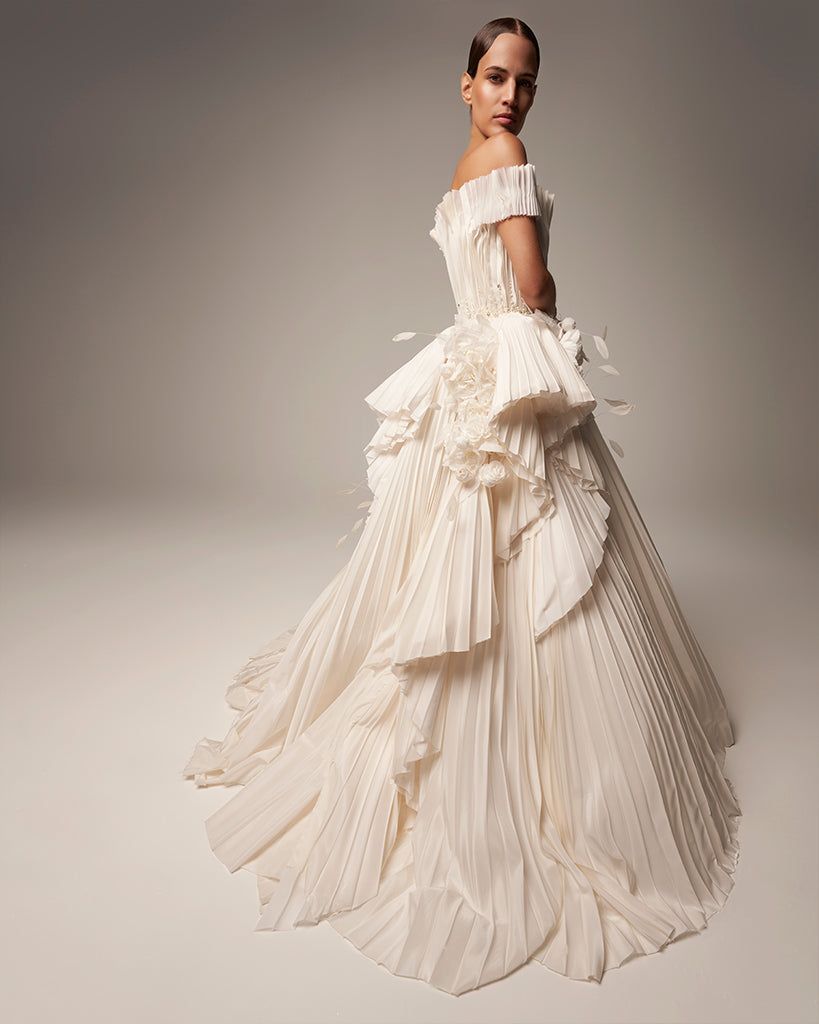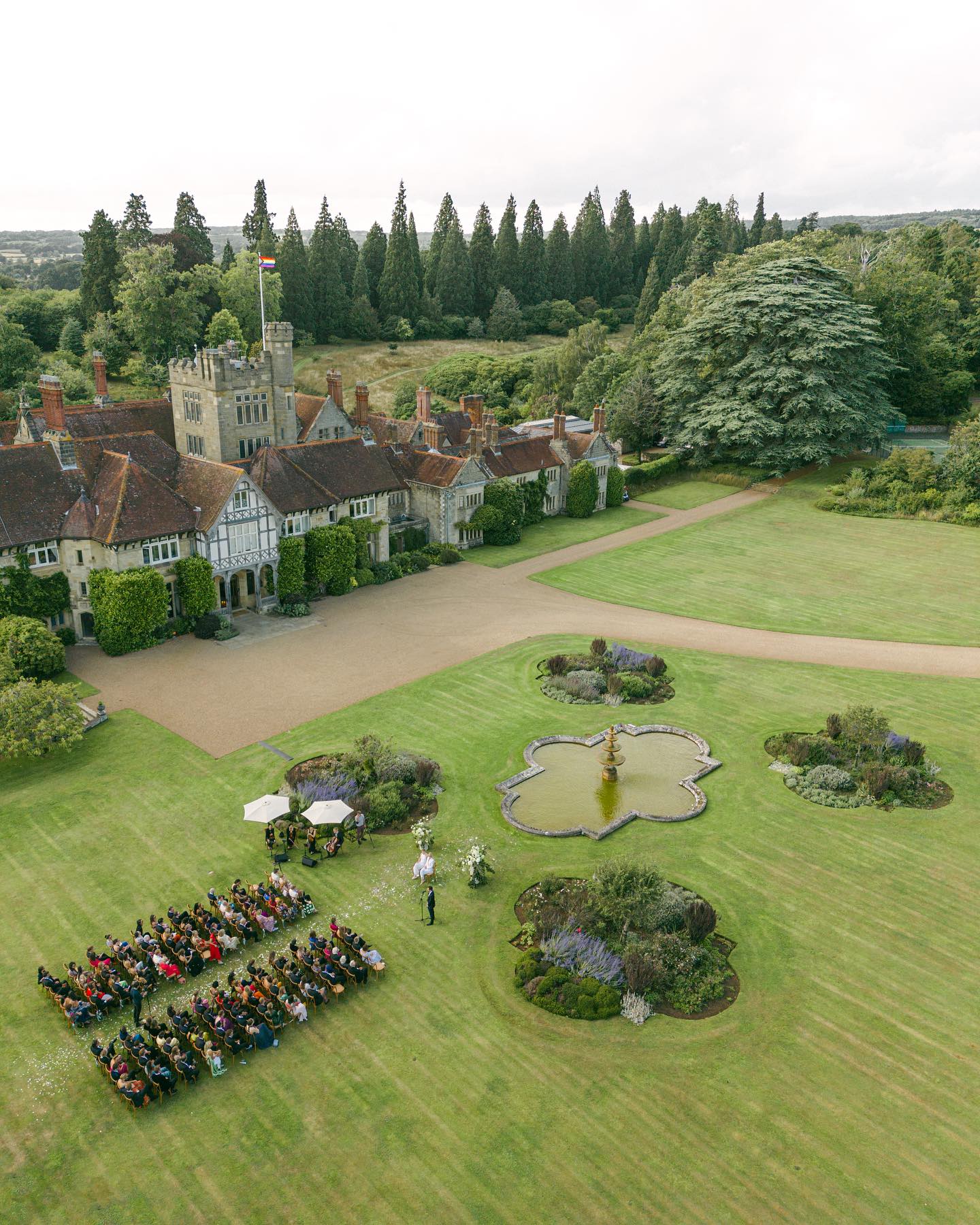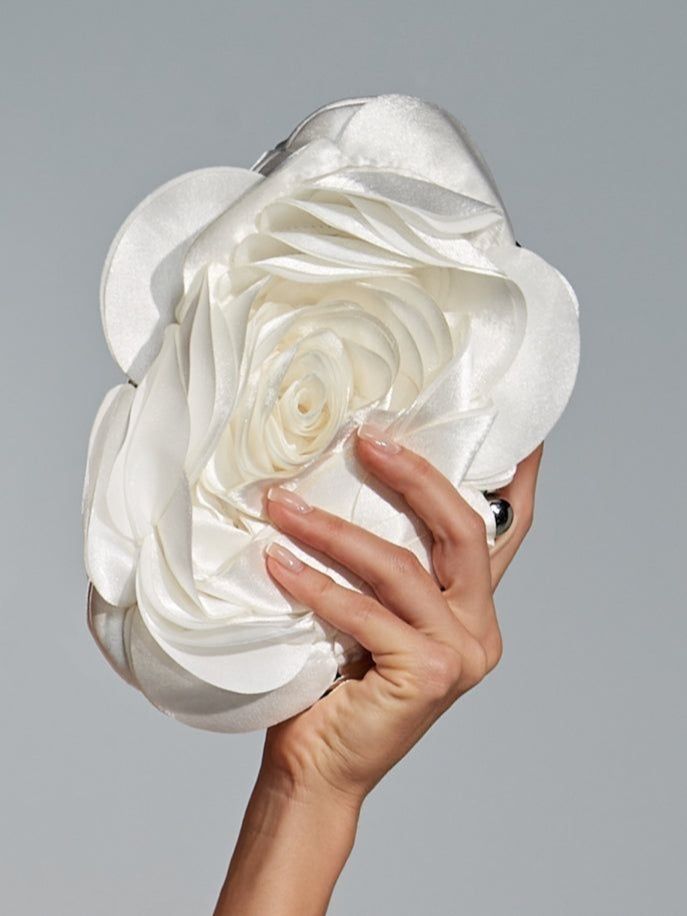Paris Fashion Week Spring/Summer 2025: Highlights with a Touch of Bridal Inspiration
- Author: Natali Grace Levine
- Reading time: 10 min 13 sec
- Publication date: 10/04/2024
- Updated: 01/08/2025
- Key Trends of Paris Fashion Week Spring/Summer 2025
- Sustainable Fashion Revolution
- Futuristic Fabrics and Technology
- Fluidity and Gender-Neutral Fashion
- Playful Silhouettes and Volume
- Nostalgia Meets Modernity
- Retro Futurism: A Blend of Past and Future
- The Rise of Collaborative Collections
- The Influence of Social Media and Digital Fashion
- The Art of Storytelling Through Fashion
- A New Era for Haute Couture
Paris Fashion Week Spring/Summer 2025 was one of the most vibrant events in the fashion world, showcasing new collections from leading designers and setting the tone for next year’s trends. This year’s shows stood out with bold choices in colors and materials, along with a strong focus on sustainability. All these elements, combined with a creative approach to design, made Paris Fashion Week Spring/Summer 2025 an unforgettable event.
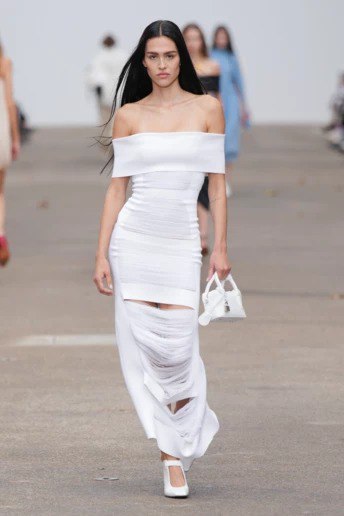
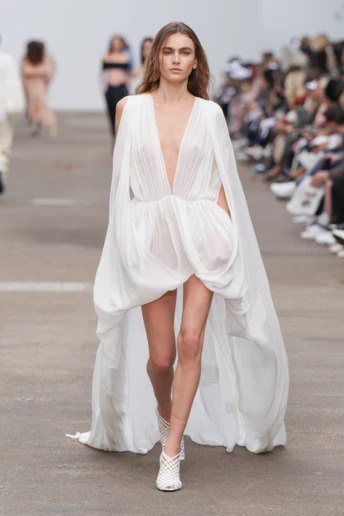
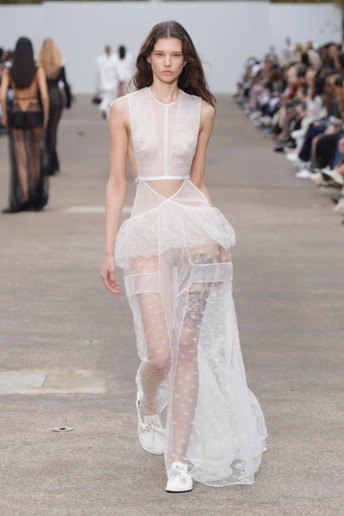
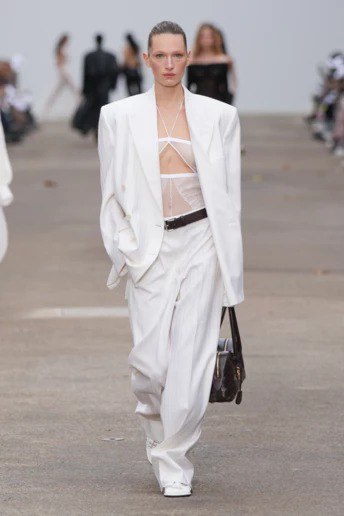
Find Your Perfect Wedding Vendors
Key Trends of Paris Fashion Week Spring/Summer 2025
One of the defining features of the Paris Fashion Week Spring/Summer 2025 collections was the daring use of color. Designers embraced bold and energetic palettes, with a clear departure from the muted and neutral tones that dominated previous seasons. Vibrant hues like electric blue, neon pink, and deep emerald were common across many runways, adding a sense of optimism and excitement to the collections. These colors were often paired with contrasting textures, such as shiny metallics and matte fabrics, creating a dynamic and eye-catching effect.
The use of monochrome looks, where entire outfits were built around a single, intense color, also gained popularity. This trend not only made a statement but also allowed designers to explore the interplay between different fabrics and silhouettes. Bright oranges, lime greens, and fuchsia tones created a bold visual impact, signaling a renewed sense of energy and creativity in the fashion world.
Sustainable Fashion Revolution
Sustainability has been a growing theme in the fashion industry, and Paris Fashion Week Spring/Summer 2025 brought this issue to the forefront in an unprecedented way. Many designers focused on using eco-friendly materials, innovative recycling techniques, and zero-waste designs to create collections that were as stylish as they were sustainable.
Designers like Stella McCartney, who has long been a champion of sustainable fashion, led the way with collections that featured organic cotton, recycled plastics, and cruelty-free materials. Meanwhile, new labels and emerging designers also made waves with innovative approaches to sustainability, such as using biodegradable fabrics and producing garments through low-impact processes. This shift toward responsible fashion not only highlighted the industry’s growing environmental awareness but also suggested that sustainability is no longer a niche trend but a fundamental element of high fashion.
Upcycling was another significant trend, with designers transforming existing materials and garments into new, fresh pieces. Vintage textiles, discarded fabrics, and even old collections were reimagined in innovative ways, creating one-of-a-kind looks that celebrated both creativity and sustainability. This approach not only contributed to reducing waste but also challenged traditional notions of luxury and exclusivity.
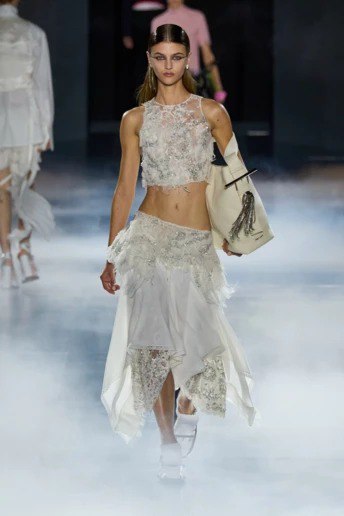
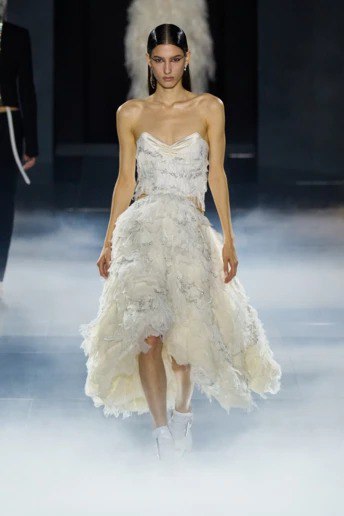
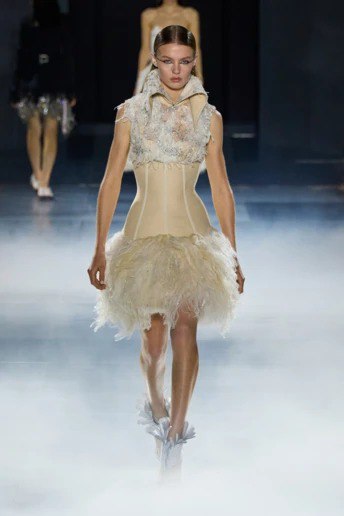
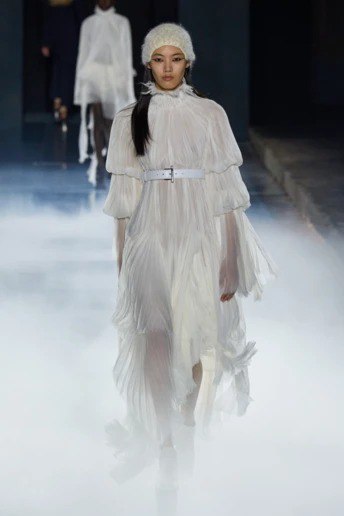
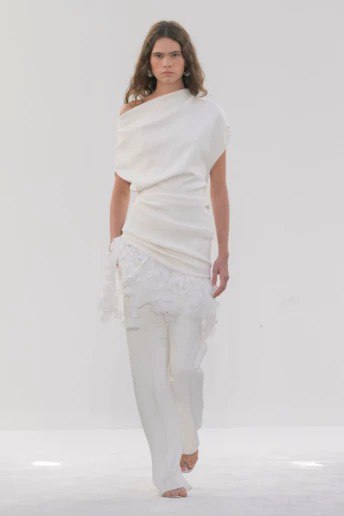
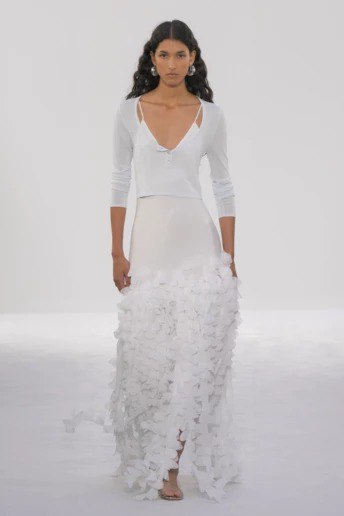
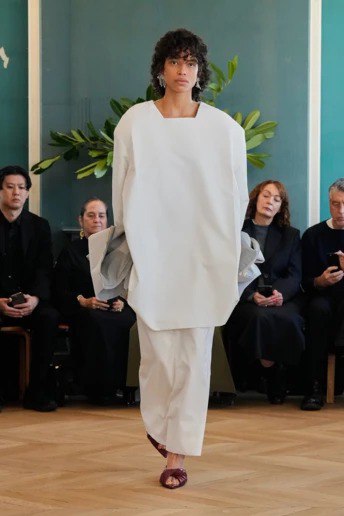
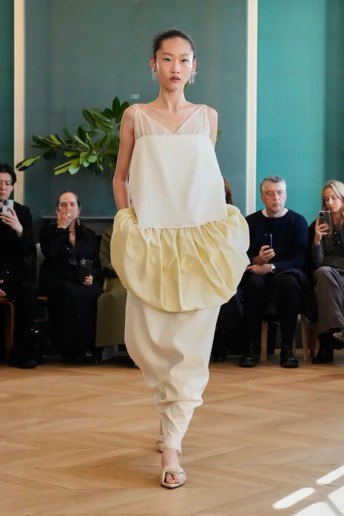
Futuristic Fabrics and Technology
Technology played a central role in many of the collections showcased at Paris Fashion Week Spring/Summer 2025. Designers experimented with futuristic fabrics and innovative techniques, pushing the boundaries of what fashion can be. From 3D-printed garments to fabrics with smart properties—such as those that adapt to the wearer’s body temperature or change color under different lighting conditions—this season’s collections blurred the line between fashion and technology.
Some designers even incorporated augmented reality (AR) elements into their runway shows, offering audiences an immersive experience that extended beyond the physical garments. For example, certain looks were accompanied by digital overlays that transformed as models moved down the catwalk, creating a hybrid of fashion and visual art.
Futuristic materials, such as metallic fabrics with holographic effects, were also a common theme. These high-shine, reflective surfaces added a space-age feel to the collections, giving a nod to the intersection of fashion and technology in the modern world. Designers like Iris van Herpen continued to push the envelope with their use of laser-cut fabrics and intricate sculptural designs that seemed to defy the laws of physics.
Fluidity and Gender-Neutral Fashion
Another major theme that emerged at Paris Fashion Week Spring/Summer 2025 was the fluidity of gender in fashion. Many designers chose to break down the traditional boundaries between men’s and women’s clothing, offering gender-neutral collections that celebrated inclusivity and self-expression. Silhouettes were often relaxed and unstructured, allowing garments to be worn by individuals of any gender.
The concept of genderless fashion was reflected not only in the silhouettes but also in the choice of colors and fabrics. Soft pastels, flowing fabrics, and traditionally “feminine” details like ruffles and lace were paired with more masculine elements such as tailored jackets and trousers. This blending of gendered aesthetics created a fresh, modern look that emphasized the freedom of personal style over conformity to traditional norms.
Several major houses, including Balenciaga and Gucci, leaned into this trend, showcasing collections that featured oversized, androgynous pieces that could be worn in a variety of ways. The message was clear: fashion is for everyone, and the future of style lies in breaking down barriers rather than reinforcing them.
Playful Silhouettes and Volume
While minimalism had its moment in past seasons, Paris Fashion Week Spring/Summer 2025 saw a return to more extravagant and voluminous silhouettes. Designers played with exaggerated shapes and proportions, creating garments that made a bold statement. From oversized puff sleeves to billowing skirts and dresses with cascading layers, volume was used to create a sense of drama and movement on the runway.
Balmain, for example, embraced this trend with a collection that featured sculptural designs, dramatic shoulders, and voluminous skirts that paid homage to the 1980s power-dressing era. Similarly, Valentino showcased ethereal, flowing gowns with layers of tulle that seemed to float down the runway.
Volume wasn’t just limited to formalwear. Even more casual pieces, such as oversized trench coats, baggy trousers, and voluminous blouses, were styled in a way that balanced comfort with high fashion. This trend was all about making a visual impact while offering wearability and ease.
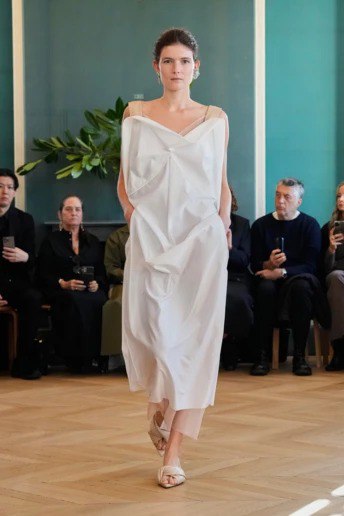
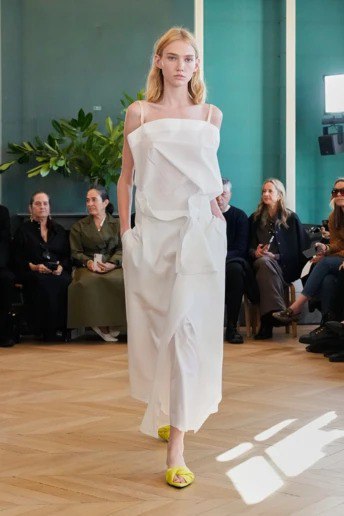
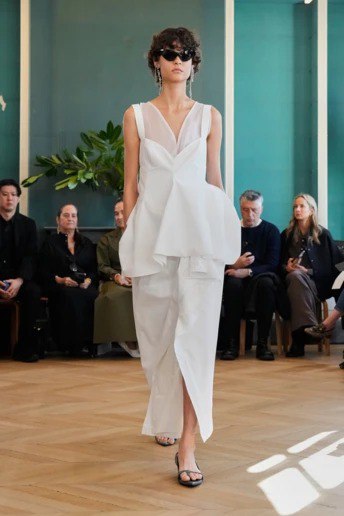
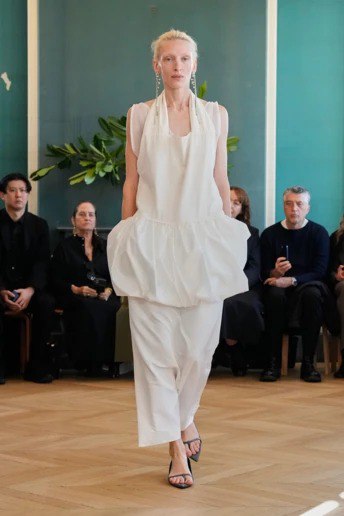
Nostalgia Meets Modernity
A recurring theme at Paris Fashion Week Spring/Summer 2025 was the blending of nostalgia with contemporary design elements. Many collections paid tribute to past decades—particularly the '90s and early 2000s—by incorporating vintage styles and silhouettes, but with a modern twist. Low-rise jeans, cargo pants, and slip dresses made a strong comeback, reinterpreted in new ways that felt fresh and current.
Designers like Chanel and Louis Vuitton looked to their archives for inspiration, reviving classic designs but updating them with modern materials and cuts. These collections served as a reminder that fashion is cyclical, with trends from the past always finding new life in the present.
The influence of Y2K fashion, in particular, was evident in the use of bold accessories, metallic fabrics, and playful prints. However, the modern reinterpretation of these nostalgic trends ensured that they felt relevant to today’s fashion landscape. This fusion of old and new was a celebration of fashion’s ability to evolve while honoring its history.
Retro Futurism: A Blend of Past and Future
A fascinating theme that surfaced during Paris Fashion Week Spring/Summer 2025 was the concept of retro futurism. This aesthetic, which blends nostalgic references from past decades with forward-looking, futuristic elements, was seen in numerous collections. Designers sought to capture the optimism of earlier eras—such as the '60s Space Age and the sleek minimalism of the '90s—while incorporating modern materials and technologies to create something entirely new.
Brands like Paco Rabanne and Courrèges leaned heavily into this theme. Paco Rabanne’s metallic chainmail dresses, a signature from the brand’s past, were reimagined for a new generation, using modern techniques and eco-friendly materials. Similarly, Courrèges drew inspiration from its futuristic designs of the 1960s, but updated them with sleek, sustainable fabrics and more tailored silhouettes, creating a juxtaposition of old-school cool and cutting-edge innovation.
This retro-futuristic approach reflects the cyclical nature of fashion, where past trends are constantly revisited and reinterpreted for modern audiences. At Paris Fashion Week Spring/Summer 2025, this fusion of past and future was not just a nostalgic nod but a way of addressing current concerns—particularly around sustainability and technology—while maintaining a connection to fashion’s rich history.
The Rise of Collaborative Collections
Collaboration has long been a key strategy in the fashion industry, but at Paris Fashion Week Spring/Summer 2025, this trend reached new heights. Many major fashion houses teamed up with artists, technologists, and even other designers to create unique, boundary-pushing collections that blurred the lines between fashion, art, and technology.
One of the standout collaborations was between Louis Vuitton and renowned contemporary artist Yayoi Kusama. The collection featured Kusama’s signature polka dots, which adorned everything from handbags to jackets, creating a vibrant, playful aesthetic that was instantly recognizable. This collaboration was more than just a marriage of fashion and art; it was a statement about how fashion can be a platform for artistic expression, and how the boundaries between different creative industries are increasingly porous.
In a similar vein, Off-White, under the leadership of Ib Kamara, continued its tradition of cross-disciplinary partnerships, working with architects and digital artists to create not only garments but immersive environments. These collaborations helped transform the traditional runway format into a more interactive and multi-sensory experience, where fashion became one component of a larger artistic narrative.
These partnerships are indicative of a larger trend within the fashion world, where designers are looking beyond their own discipline for inspiration and collaboration. By working with creatives from different fields, fashion brands are able to push the boundaries of what is possible, both in terms of design and how fashion is presented to the world.
The Influence of Social Media and Digital Fashion
Another undeniable aspect of Paris Fashion Week Spring/Summer 2025 was the growing influence of social media and digital fashion. As the world becomes increasingly digitized, the way we consume fashion is evolving, and this shift was reflected in how designers presented their collections. Social media platforms like Instagram and TikTok played a crucial role in amplifying the reach of fashion week, allowing global audiences to engage with the shows in real-time.
Many designers took this into account by creating collections that were not only visually stunning in person but also optimized for social media. Bright, bold colors, striking patterns, and dramatic silhouettes were designed to pop on screen, ensuring that these looks would go viral and reach millions of people around the world.
In addition to social media, digital fashion—where garments exist solely in the virtual world—emerged as a significant trend at Paris Fashion Week Spring/Summer 2025. Several brands, including Balenciaga, debuted digital-only collections, allowing consumers to purchase virtual garments for their avatars in online spaces like the metaverse. This innovative approach not only capitalized on the growing popularity of virtual worlds but also pointed to a more sustainable future, where fashion can exist without the environmental impact of physical production.
This intersection of fashion and technology is reshaping how the industry operates, from design and production to marketing and sales. As digital platforms become increasingly important for the fashion industry, the lines between the physical and virtual worlds continue to blur, creating new opportunities for designers and consumers alike.
The Art of Storytelling Through Fashion
A notable theme at Paris Fashion Week Spring/Summer 2025 was the emphasis on storytelling. More than ever, designers used their collections to convey deeper narratives, whether through the themes of their shows, the choice of materials, or the way garments were constructed. Fashion was not just about the clothes; it was about telling a story that resonated with audiences on an emotional and intellectual level.
This storytelling was evident in the collections of designers like Alexander McQueen, where garments were imbued with historical references and a sense of drama. McQueen’s Spring/Summer 2025 collection drew inspiration from both mythological figures and contemporary cultural movements, creating pieces that felt both timeless and relevant. Every element of the collection, from the intricate embroidery to the theatrical presentation, was designed to evoke a sense of narrative, making the audience feel as though they were witnessing a living piece of art.
Similarly, Marine Serre’s collection at Paris Fashion Week Spring/Summer 2025 told a powerful story about climate change and environmental activism. Serre, known for her commitment to sustainability, used upcycled materials and reworked vintage pieces to create a collection that highlighted the importance of preserving the planet. The show itself was staged as a visual representation of the Earth’s fragile ecosystem, with models walking through a set designed to look like a dystopian landscape. Through her designs, Serre conveyed a message about the urgency of addressing environmental issues, making fashion a platform for activism.
This narrative-driven approach to fashion reflects a broader trend within the industry, where designers are increasingly using their work to comment on social, political, and environmental issues. At Paris Fashion Week Spring/Summer 2025, fashion was not just about aesthetics; it was about meaning and impact.
A New Era for Haute Couture
Haute couture, with its emphasis on craftsmanship, exclusivity, and artistry, has always been a defining feature of Paris Fashion Week, and the Spring/Summer 2025 season was no exception. However, this year saw a new wave of designers reinterpreting what haute couture can be, blending tradition with innovation to create garments that felt both classic and cutting-edge.
Chanel, for instance, showcased a collection that honored the brand’s rich heritage while incorporating modern elements. The iconic tweed suits, a staple of Chanel’s house style, were reimagined with updated cuts, fresh color palettes, and contemporary embellishments. The result was a collection that paid homage to Chanel’s history while appealing to the tastes of today’s luxury consumers.
Similarly, designers like Valentino and Jean Paul Gaultier used haute couture as a canvas for artistic experimentation. Valentino’s ethereal, flowing gowns—crafted from layers of tulle, silk, and intricate lace—evoked a sense of dreamlike fantasy, while Gaultier’s collection pushed the boundaries of couture with daring cuts, bold colors, and unexpected fabric combinations. These collections demonstrated that while haute couture is rooted in tradition, it is also a space for innovation and reinvention.
This evolution of haute couture is indicative of a larger trend within the fashion world, where designers are blending old and new, classic and contemporary, to create garments that are timeless yet forward-thinking. Paris Fashion Week Spring/Summer 2025 showcased the enduring appeal of haute couture while also pointing to its future as a space for creative freedom and experimentation Paris Fashion Week Spring/Summer 2025 offered a glimpse into the future of fashion, with designers pushing boundaries, experimenting with new technologies, and embracing sustainability. Bold colors, voluminous silhouettes, and gender-neutral designs dominated the runways, reflecting the diverse and dynamic nature of modern fashion. Whether through innovative materials, sustainable practices, or playful reinterpretations of nostalgic styles, the collections presented this season showcased the endless possibilities of fashion as both an art form and a vehicle for social change.
As we look ahead to the coming year, it’s clear that the trends seen at Paris Fashion Week Spring/Summer 2025 will not only influence the way we dress but also shape the broader conversation around sustainability, inclusivity, and the future of fashion. The creative energy and forward-thinking approach that defined this season's shows set the stage for what promises to be an exciting year in fashion.
